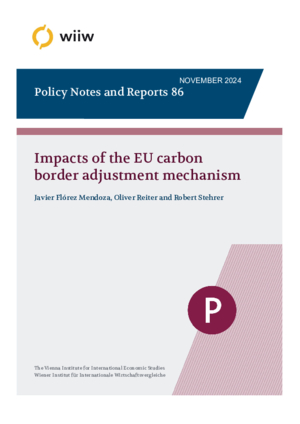Impacts of the EU carbon border adjustment mechanism
Javier Flórez Mendoza, Oliver Reiter and Robert Stehrer
wiiw Policy Note/Policy Report No. 86, November 2024
17 pages including 5 Figures
We summarise the results of our study employing a quantitative trade model to assess the implications of the EU carbon border adjustment mechanism (CBAM) on trade flows, welfare, real wages and CO2 emissions. Specifically, the general equilibrium effects of the introduction of a tariff on carbon-intensive products on European Union (EU) and European Free Trade Association (EFTA) members and non-members are assessed. For the EU, we find an increase in the terms of trade and consequently small positive welfare effects, whereas there are tiny negative effects on real wages. Non-EU countries face a decline in the terms of trade and a small welfare loss as well as marginally declining real wages. Global CO2 emissions are marginally reduced, although they minimally increase in the EU due to specialisation effects.
Keywords: New Quantitative Trade Model, Carbon Border Adjustment Mechanism (CBAM), trade policy welfare, CO2 emissions
JEL classification: F11, F13, F14, F18, Q56
Countries covered: non specific
Research Areas: International Trade, Competitiveness and FDI
